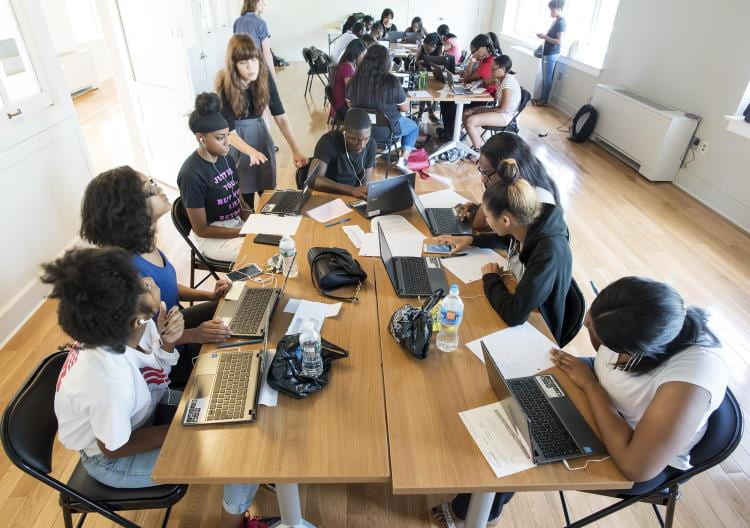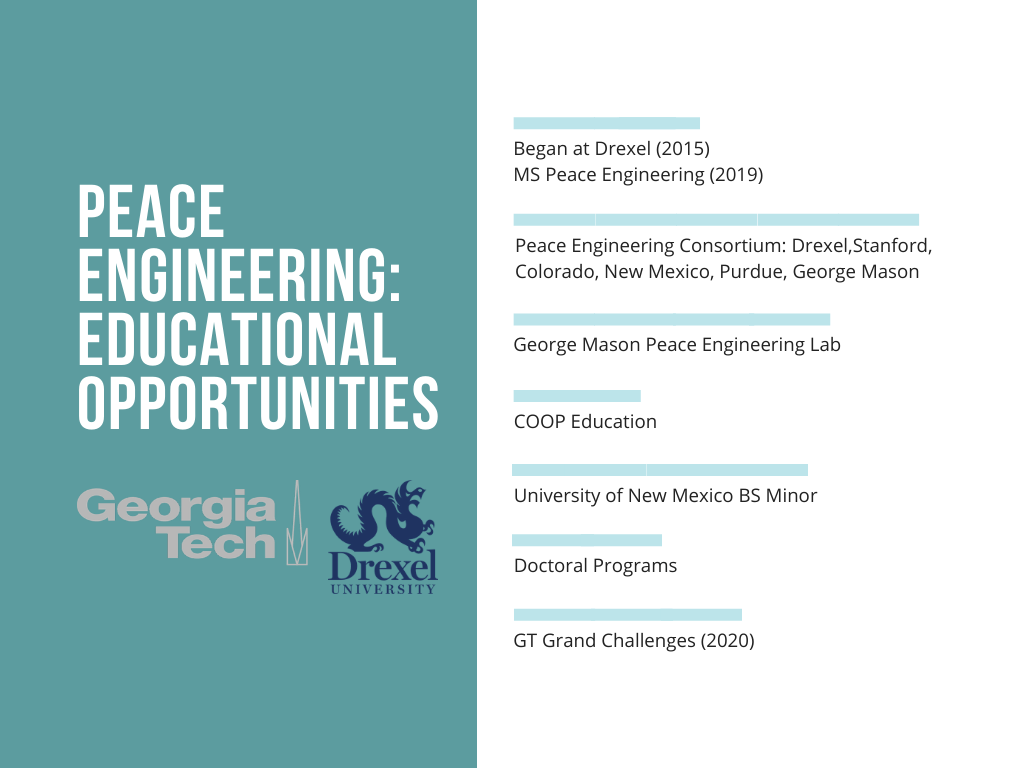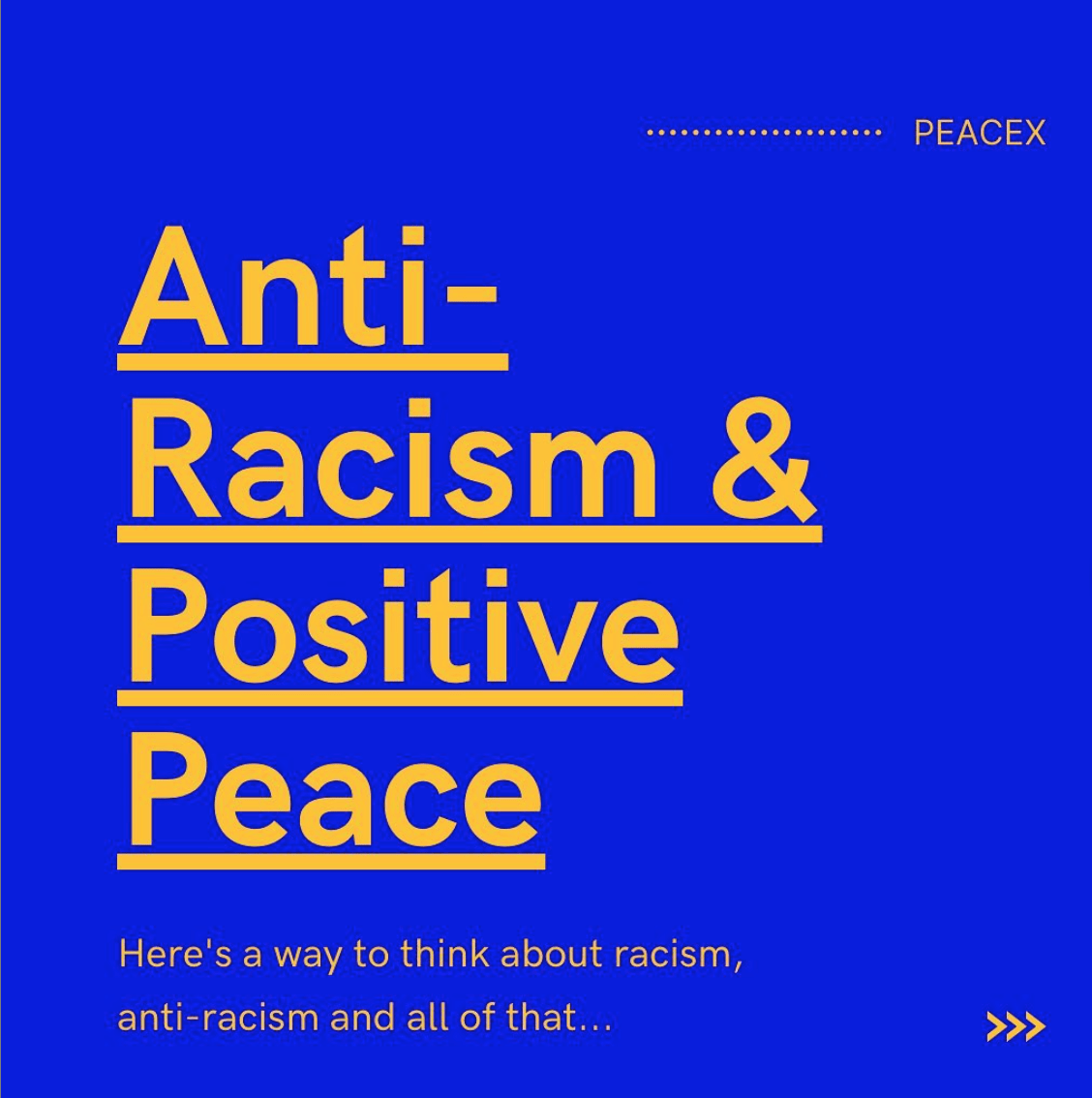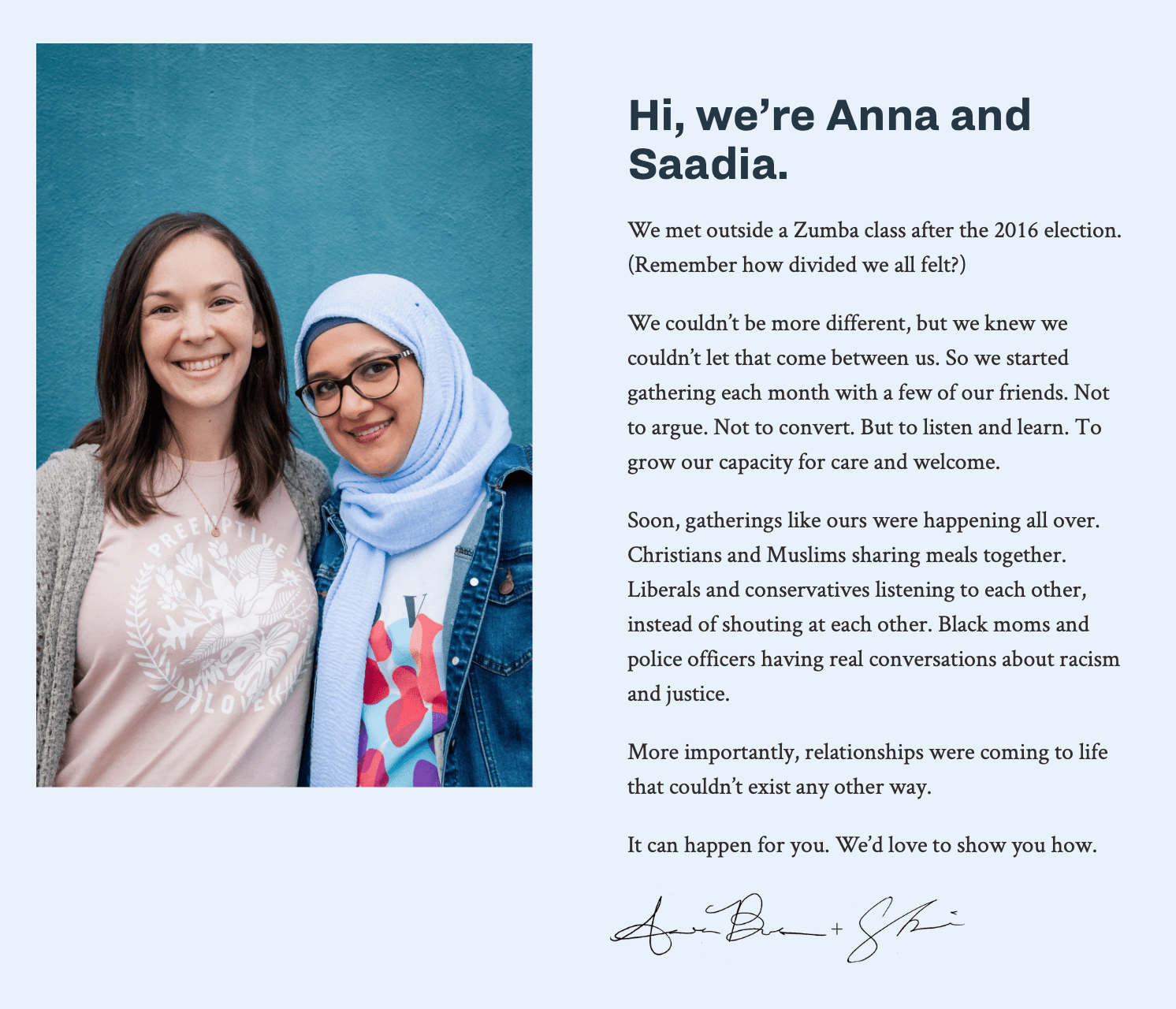Peace Engineering: An Emerging Field

Peace engineering at Drexel University via Philadelphia Academies, Inc. where the participants work on a Digital-On-Ramps project (source).
Language is a tool so essential, so ingrained in our daily lives it’s often overlooked. However, these very characteristics of its nature is what makes it so influential. Linguistics carve the very landscape of what we talk about it and how we talk about it. What words exist and what words are commonly used shape us down to as personal of a level as our thoughts (there are many interesting studies on how language correlates to collectivist vs. individualistic cultures).
In the academic world, there is the distinction between fields that are considered “hard sciences” and fields considered “soft sciences.” Hard sciences often include subjects such as physics, chemistry, biology, and math while soft sciences include sociology, philosophy, and psychology. Hard sciences fall more into the realm of the highly sought after STEM category while soft sciences fall more with liberal arts. The connotations of calling one hard and the other soft is obvious in that a synonym for hard is difficult while things that are soft are considered weaker and lesser. However, the connotations are also subtle in that the terms “hard science” and “soft science” are highly ingrained in how we speak about different fields to where their connotations are not questioned. The contradiction then comes in the fact that the hard sciences are not the more difficult of the two categories. Furthermore, even the existence of the two categories creates a false narrative that so-called “soft” and “hard” fields are not interconnected when often times the issues they tackle would be best approached in an interdisciplinary manner. Problems that “hard sciences” tackle, such as improving medicine, creating new technologies, researching our environments, have such profound impacts on actual people and society. However, what’s not ingrained in the practice of many “hard sciences” is considering these human factors and its impact in a human sense, the realm of “soft sciences”. Within “hard sciences,” science is frequently done for science or money’s sake. On the flip side, “soft sciences” are often tackling broad societal problems such as massive inequality, poverty, and racism, problems that can benefit from something like an engineering mindset. In order to approach progress most effectively and sustainably, we need to eliminate the patronizing language and mindset as well as the deep chasm between “hard” and “soft” sciences.
Peace Engineering: What Is It?
Peace Engineering is effectively a new field aiming to serve as this interdisciplinary function, bridging the chasm between “hard” and “soft” sciences. In formulating the basis of peace engineering, an interdisciplinary framework was formed with three main components:
(1) problems require systems-based solutions
(2) an ounce of prevention is worth a pound of cure
(3) context is critical
Problems require systems-based solution
“It’s not thinking about how do you find a hammer to hit nails, it’s how do you think of a complete toolbox to actually address the needs of a project“
— Joseph B. Hughes
In tackling large societal and global problems, speakers Joseph B. Hughes and General Phil Breedlove (in the webinar) discussed an acronym describing the different types of powers that a nation holds. Intentionally simplified (since a nation holds many different types of powers), the acronym DIME stands for diplomatic, informational/intelligence, military and economic. When tackling broad complex issues, its vital that a nation employs several different powers to properly address the nuance that most nationwide conflicts hold. Especially the U.S. has historically led very narrow approaches to conflicts that unsurprisingly had unsatisfactory results. The U.S., especially, is very poor at countering misinformation. An ongoing example of U.S.’s narrow approach is its response to ISIS: a heavy militaristic approach with practically no diplomatic approaches or action against misinformation. In addition, there is also no economic recovery plan for Syria after the U.S. has finished heavily bombing it.
An ounce of prevention is worth a pound of cure
“If you simply Google the cost of World War One and World War Two in military and civilian lives, in economies destroyed and actual cost of the battle and then recovering from the battles, that is an astronomical cost… And we spend a very small amount, in relation a microscopic amount, to keep NATO alive and vibrant. And across the last 70 almost 75 years now, NATO has prevented World Wars on the Eurasian landmass”
— General Phil Breedlove
A current movement based off of this tenant of prevention is the Abolish the Police movement. The reasoning behind this movement comes from the reactive nature of police work. Because police officers only respond to crime, they are ineffective in actually building towards a safer community with less crime. It’s much more sustainable to divest the increasing police funds into preventative systems/organizations that invest in the communities and its residents. By building up and investing in the people that live there, this raise in quality of life will then more effectively decrease crime.
Context is critical
“To better engineer the peace… know what it looks like before the conflict starts”
— General Phil Breedlove
The creation of peace and the presence of peace is entirely dependent on the environment that its in. Each society has its own nuances, cultures and norms. When engineering peace its important to work within that society rather than impose your own ideas of what peace looks like in your own society. An example of successfully engineered peace is with the tearing down of the Berlin Wall. Because the direction of peace was modeled off of Berlin during a time of peace, the transition after the tearing down of the wall resulted in a peaceful aftermath.

Peace Engineering & Education
A number of universities have already begun laying the groundwork in building curriculums and relationships with partners to develop opportunities for education in peace engineering. In the webinar, we get to hear a bit about some of these different programs, including Drexel’s undergraduate and graduate programs.
Dr. Joseph Hughes actually helped create the masters program (as discussed in the webinar) and there seems to be a strong sense that whether it happens at Drexel specifically or not, a doctorate focused on peace engineering is likely to occur within the next few years.
The Masters “combines case-based courses with experiential learning internships and research development efforts that are driven by the needs of the peacebuilding community,” pointing to the importance of hands on work and research complementing one another.
“I began working in things related to peace engineering in about 2014 and in about 2015, we had some initial courses and offerings at Drexel to test the waters on student interest in peace engineering. All our feedback was very positive and we actually evolved to the point of offering a Masters degree program that began in 2019 and we actually have graduates of that program and a number of students enrolled in that program now.”
-Dr. Joseph Hughes

Image from KSU Interdisciplinary Studies Department website
Kennesaw boasts many programs that encourage and foster intercultural collaborations and inclusion, but they also have a dedicated Peace Studies minor. Robbie Lieberman has helped champion this program and encourage the conversation surrounding peace across disciplines.
“The Peace Studies Minor serves students who wish to pursue a life dedicated to a more just and peaceful world. This interdisciplinary program prepares students for careers in a wide range of professions, including those in human relations, veteran affairs, patient care, academic services, child services, government and law, nonprofit organizations with community- and regionally-focused objectives, and non-governmental organizations dedicated to transforming international conflict. The minor also helps students prepare for advanced studies in political science, international relations, conflict management, public administration, and a host of other subjects.”
-Description from the KSU website, emphasis ours
Georgia Tech Master’s Level Programs and Certificates
As members of the Georgia Tech community, it is much easier to see the intricacies and nuances of different majors where the application of peace engineering may apply because we see peers working on them. For example, a graduate-level course in Civil Engineering discusses the rehabilitation and structure of buildings in relation to natural disasters. The kind of work this promotes is preemptive thinking and planning for structures that will protect and support people in crisis situations. In Digital Media, there are conversations surrounding designing for justice and disrupting systems to produce equitable data. Recently, there was a book talk hosting researcher and designer Sasha Costanza-Chock where they discussed their new book, Design Justice: Community-Led Practices to Build the Worlds We Need. Design justice sounds powerful in and of itself but does it also fall into the category of peace engineering? These snippets provide insight into how people are approaching interdisciplinary work that is effecting change needed from a local to a global level.
Some other majors at Georgia Tech that feature peace engineering elements although not explicitly described as such:

Featured Instagram Post From PeaceX Ventures Official Instagram
Launched: 2018 | Collaborators: Peace Innovation Lab at Stanford University and the City of The Hague
“PII sits at the intersection of behavior design, technology, innovation and business. We specialize in creating a culture of innovation and teaching collaboration across different boundaries. Our goal is to catalyze a thriving peace technology industry by making peace profitable.”
Mission:
(1) Establish a market signal for the value of peace
(2) Create new curriculum for ethical innovation and safe deployment of technologies that change human behavior
(3) Catalyze a Peace Tech sector and industry
Many other projects classify as peace engineering but don’t label themselves as that because they may not be familiar with the terminology or view their work in that lens. The lack of awareness is part of building a new field and adopting the terminology of peace engineering may seem small but has the power to reframe how certain skills are viewed as potentially easy or secondary when in reality they are critical and challenging components of creating sustainable and achievable peace. Looking to other institutions and efforts in this area for guidance is also critical. For example, the establishment of a market signal for the value of peace opens up the door to conversations with businesses and enterprises that otherwise may not be interested in investing efforts towards the “soft” sounding field of peace engineering.
Looking Forward: What kind of research is needed?
To give a sense of some of the challenges peace engineering faces as an emerging field and area of study, the following questions can help spark thought and discussion into what work is needed and how you may be able to bring the framework of peace into the important work you are doing.
- How do we measure peace? Conflict? Violence?
- How can we create engineering solutions to larger scales and domains?
- Can we create systems of systems models for simulation and visualization?
- Can we harness the positive potential of an interconnected world?
- Humanitarian disasters, human displacement: how do we avoid? Recover? Reconcile?
How do we solve problems we can’t measure?
While Dr. Hughes points out that research is still needed in many areas, he points to possibilities of addressing these issues through interdisciplinary collaboration. People are needed in academia, people are needed in the automobile industry, people are needed everywhere to put peace at the forefront of the conversation. In the spirit of recognizing work in the complex area of peace engineering, not just in educational institutions, here are some organizations and authors tackling complex problems that hinder peace for your enjoyment and inspiration.

Gathering explanation from Preemptive Love’s website, click here to learn more!
- Preemptive Love
- Sandy Hook Promise
- PeaceTech Lab
- Freerice
- Another similar resource for those seeking to help who may not have financial means is by taking short surveys through Survey Monkey. You can choose a charity to support!
- Anna Tsing, The Mushroom at the End of the World
- Robin Wall Kimmerer, Braiding Sweetgrass